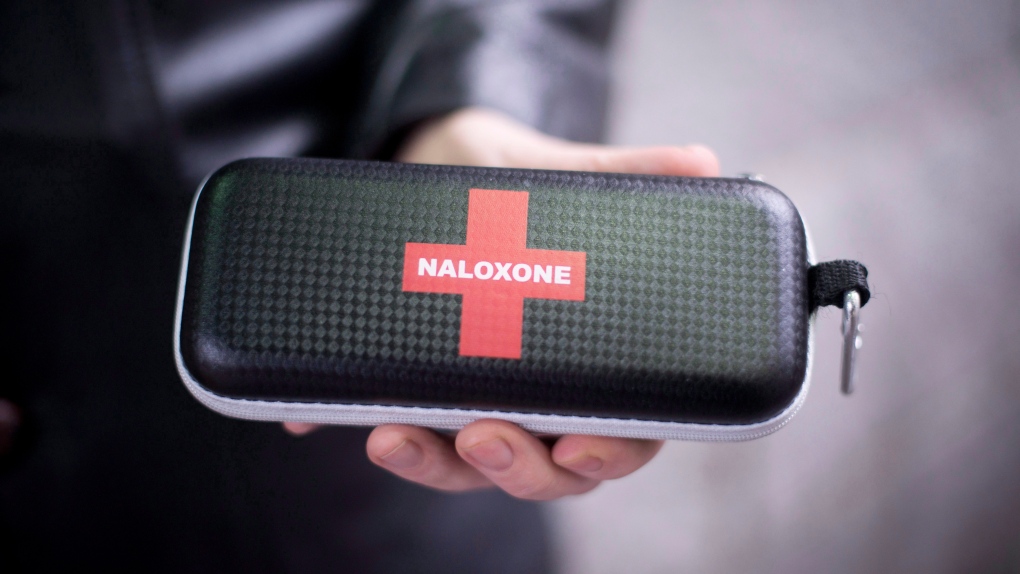6 suspects overdose deaths reported in Toronto over 4 days as new potent drugs found in unregulated supply
Toronto Public Health (TPH) is alerting the public after paramedics recently responded to six suspected opioid overdose-related deaths.
The health unit said that the number of people who died of a drug overdose between March 14 and 17 is triple the current average seen over a four-day period in the past 12 weeks. The deaths occured troughout the city, public health said.
1/4: #DrugAlertTO: there has been an increase in suspected opioid overdose-related deaths attended by @torontomedics, incl. 6 suspected opioid overdose related deaths between Mar 14-17: https://t.co/v55NOtwjpq
— Toronto Public Health (@TOPublicHealth) March 18, 2024
And while it is not known at this point exactly what substances those who died consumed, TPH’s bulletin made mention of the recent identification of two high-potency synthetic painkillers in the city’s unregulated drug supply.
The “new” drugs found are nitazene opioids and were detected in drug samples collected by Toronto’s Drug Checking Service, a free and anonymous public health service that is offered at five harm reduction agencies in the downtown core.
The first substance, N-desethyl etonitazene, is considered to be up to 10 times stronger than fentanyl.
It was first identified on Feb. 23 at Parkdale Queen West Community Health Centre’s (PQWCHC) Queen West site. The sample analyzed, which was expected to be fentanyl, was a yellow/beige powder. Instead, it contained a combination of N-desethyl etonitazene and caffeine, the service said in a March 18 bulletin.
The second drug is called protonitazepyne and is believed to be more than 20 times stronger than fentanyl.
This substance, which is also known as N-pyrrolidino protonitazene or “pyro”, was first found on March 6 and then again on March 7, also in Toronto’s west end, but at PQWCHC’s Parkdale site. The samples contained a blue powder that was expected to be oxycodone (OxyContin), but actually contained protonitazepyne and etonitazepyne, another type of synthetic opioid.
Toronto’s Check Checking Service’s analysis site member at the Centre for Addiction and Mental Health (Clinical Laboratory and Diagnostic Services) identified these two new drugs by using a technique known as liquid chromatography-Orbitrap high resolution mass spectrometry. Another analysis site member at St. Michael’s Hospital (Department of Laboratory Medicine) has also identified them using gas chromatography-mass spectrometry. Both processes essentially separate and identify compounds found in a substance.
It is not known how much of these drugs were found in each sample as TDCS does not currently quantify N-desethyl etonitazene or protonitazepyne.
The city’s drug checking service noted that none of these samples were “reported as being associated with an overdose or other unpleasant or abnormal effects.”
However, because of the potency of these drugs, a higher amount of naloxone may be required to rouse persons who are experiencing an overdose, especially when the substance consumed with other central nervous system or respiratory depressants like benzodiazepine-related drugs or veterinary tranquilizers.
Further, the risk of overdosing on a nitazene opioid can also be higher for people accustomed to using less-potent types of opioids like oxycodone, Percocet, hydromorphone (Dilaudid), or hydrocodone compared to those who are used to consuming fentanyl as their opioid tolerance may be lower, TDCS said.
Nitazene opioids were initially synthesized in the 1950s, but were never clinically approved for market. Most are stronger than fentanyl and are classified by Toronto’s Drug Checking Service as “high-2 potency opioids.”
According to the service, they first started showing up in the unregulated drug supply in Europe, the United States, and then Canada – primarily in Ontario and Quebec – in 2019. In Toronto, nitazene opioids were identified for the first time in the unregulated fentanyl supply in February 2021.
In late 2023, TDSC identified another highly-potent drug that was found for the first time in the unregulated supply. Medetomidine/dexmedetomidine is a tranquilizer that can put users in a deep state of unconsciousness, especially when consumed in combination with high-potency opioids, benzodiazepine-related drugs, and another animal tranquilizer called xylazine. The effects of consuming medetomidine/dexmedetomidine cannot be reversed with naloxone as these drugs are not opioids.
TIPS FOR THOSE WHO CONSUME UNREGULATED DRUGS
As always, people who use drugs are advised to carry and be trained to use naloxone, check their drugs – ideally before using, and use at a supervised consumption site or overdose prevention site or with someone else and take turns spotting each other.
Those who must use alone are urged to let someone know before they consume and to do a small test dose first.
People who use drugs are also encouraged to talk to the person they got them from, if the sample did not contain what was expected, or get their drugs from another source.
 A Naloxone anti-overdose kit is held in downtown Vancouver, Friday, Feb. 10, 2017. (THE CANADIAN PRESS/Jonathan Hayward)
A Naloxone anti-overdose kit is held in downtown Vancouver, Friday, Feb. 10, 2017. (THE CANADIAN PRESS/Jonathan Hayward)
View original article here Source









